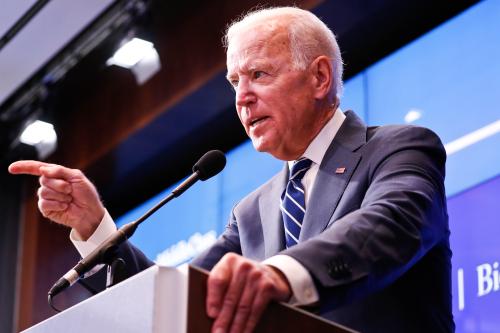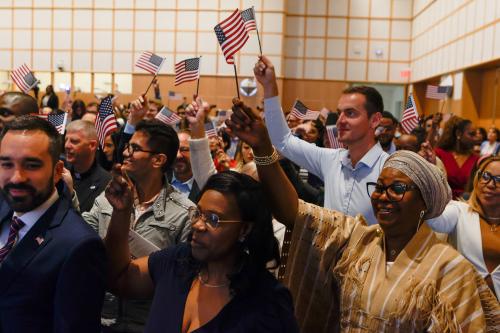How can we help the American middle class, and boost more people into its ranks? Answers abounded at last week’s event on the Future of the Middle Class, but as Janet Gornick said, “It’s really a question of political will.” Here are eight policy solutions discussed at the event:
Reduce inequality
“The crisis of the middle class, however defined, is part of the larger question about high and rising inequality,” said Janet Gornick, editor of the volume Income Inequality: Economic Disparities and the Middle Class in Affluent Countries. Gornick also reminded the audience that the level of inequality seen in the United States is “not inevitable.” She referred to fifteen solutions proposed by the late inequality expert Tony Atkinson, including higher minimum wages and lifetime taxation of inheritances.
Invest in skill upgrading
“We need to make sure that individuals who have been dislocated, displaced, or don’t have the skills demanded in today’s economy have a productive opportunity to contribute and prosper,” Melissa Kearney said. Kearney supports expanding “guided pathways” to link students more directly to career paths, as well as enhancing student supports and advising at community colleges. We’ve written about the need for better guidance at community colleges before. Former Vice President Joe Biden echoed this emphasis on community colleges in his keynote address, recommending that community colleges be free for all qualifying students.
Expand wage subsidies
Michael Strain proposed expanding earnings subsidies for low-income households, including those without children, to address declining employment rates. Currently, childless workers are eligible only for a modest subsidy under the Earned Income Tax Credit. Our colleagues have long advocated for a childless EITC.
Provide workers with paid family and medical leave
Heather Boushey, author of Finding Time: The Economics of Work-Life Conflict, argued that the middle class is facing a time crunch as well as an income squeeze. Paid family and medical leave and improved access to childcare would go a long way to help middle-class families, she said. Boushey was a member of the Brookings-AEI working group on paid family leave that reported last year.
Provide all children with savings accounts at birth
Kilolo Kijakazi described how publicly funded children’s savings accounts, which would be held until children turn 18, can help disadvantaged young people reach the middle class while also offering benefits to those who are born in the middle class or above:
Boost unionization
Heidi Shierholz argued for “a suite of policies” to help working middle-class families, including a higher minimum wage, better overtime protection, paid sick days, and fairer scheduling laws. One way to achieve those goals, she said, is to protect workers’ ability to negotiate the terms for themselves in a collective bargaining agreement.
Establish wage boards
Ben Olinsky proposed that the U.S. explore wage boards “so that we are dealing with wages not just for the very bottom, like the minimum wage, but also for the middle.” Some states, like New York and California, already use wage boards for industry-wide collective bargaining.
Close the respect gap
Reducing economic gaps will also require reducing the growing “respect gap” across classes, according to Richard Reeves. Vice President Biden also addressed the respect gap, saying, “Next time you see a sanitation worker, thank him, and watch the look on his face. … These people don’t think we care a whole lot about them, but you can’t function if they can’t keep these sewers open.”
The Brookings Institution is committed to quality, independence, and impact.
We are supported by a diverse array of funders. In line with our values and policies, each Brookings publication represents the sole views of its author(s).






Commentary
A policy wish list for the middle class
May 14, 2018